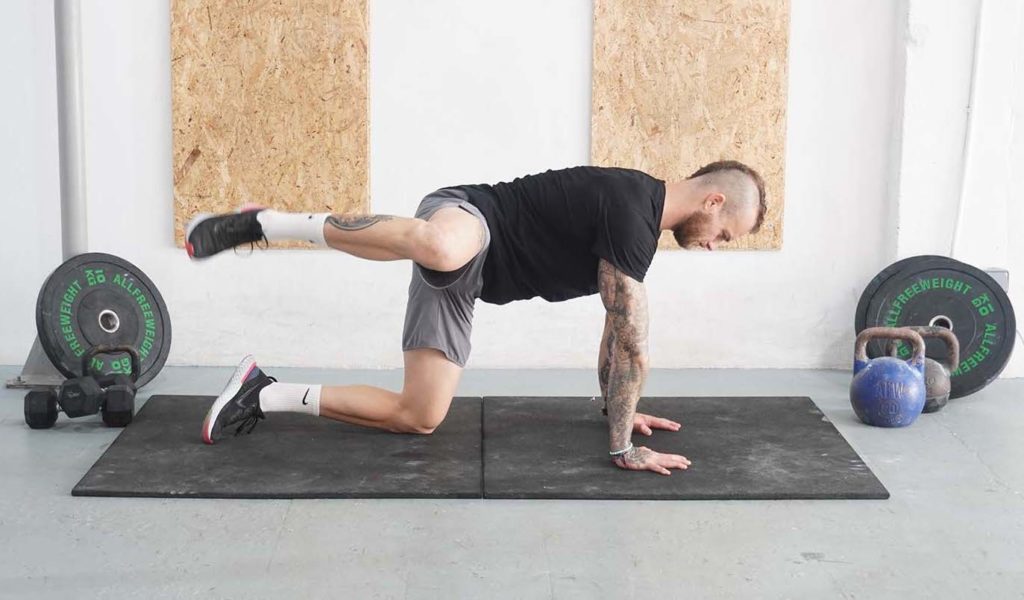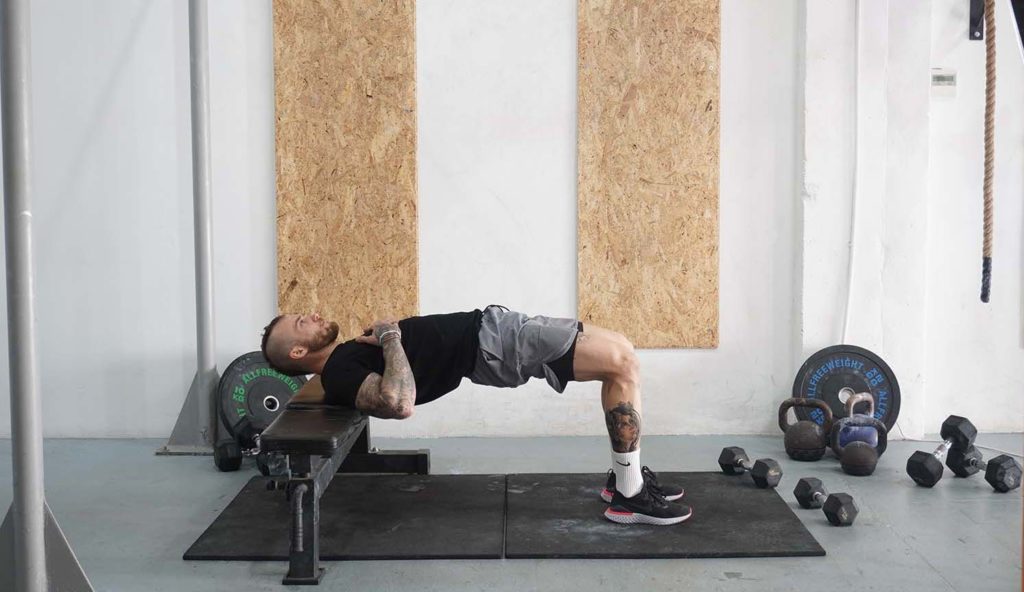What are Fire Hydrants?
There are plenty of good exercises for the glutes: hip thrusts, glute kickbacks, deep squats, and more. But few exercises can target critical areas of the glutes and hips as fire hydrants can. While simple to learn, the fire hydrant effectively strengthens the glutes, abductors, and core.
Aside from developing important muscles, fire hydrants stretch the inner thigh muscles (adductors), contributing to hip mobility, and allowing you to perform more complex exercises like barbell squats and deadlifts.
Fire hydrants are also beneficial for your daily life, given the movements numerous benefits related to strength, stability, and mobility. For example, since the exercise promotes core stability, it improves your balance and whole-body strength, making everyday tasks more accessible.
We recommend including fire hydrants late into your workout. Do lots of slow reps, ensuring that your glutes work hard. You can also do some fire hydrants before training to warm up the hips and activate your glutes.
How to do the Fire Hydrants
- Position yourself on your arms and legs with your knees below your hips and your shoulders, elbows, and wrists in a vertical line. You can also keep your shins flat against the floor.
- Keep your palms flat on the floor, and maintain a neutral back.
- Once in position, flex your right leg without changing the knee angle. Simultaneously push into the floor with both hands to create a sturdy position.
- Breathe in, take the right leg out and bring it up to your side as far as your mobility allows and breathe out. Don’t let your torso rotate with the leg – keep it in a stable position.
- Hold the top position for a second and slowly bring your right leg back to the starting position.
- Keep repeating the movement. Once you’re done, do the same for your left leg.
What muscles does fire hydrants activate?
Fire hydrants train the gluteal muscle group: gluteus maximus, minimus, medius, and tensor fasciae latae. Of the four muscles, the minimus, medius, and tensor fasciae latae work the most in bringing our legs to the side (abduction) and controlling them on the way back (1). The gluteus maximus also works to a much smaller degree, mainly to assist the smaller muscles surrounding it.
The fire hydrant exercise also trains the midsection musculature: abs, transverse abdominis, obliques, and erector spinae. These muscles flex isometrically to keep us in position while performing the exercise.
Proper Form when Performing Fire Hydrants
One of the most important tips related to the proper execution of fire hydrants is doing each repetition slowly and with reasonable control. In doing so, you force the correct muscles to engage, get fatigued, and grow. Jerking motions might help do you extra repetitions, but you won’t activate the correct muscles fully. Similarly, raise your legs as much as you can through smooth motions. There is no point in using momentum to abduct your legs more.

The second tip related to fire hydrants is engaging your core and staying stable during each set. As you set up, engage your abs, keep your back in a neutral position, and raise your legs with fluid motions.
It’s also essential to keep your torso in a steady position with hips pointing to the floor as you raise your legs. The goal is to open up the hips and develop the glutes. Rotating your hips in the direction of the leg raise prevents you from training the glutes effectively.
Variations and Modifications of Fire Hydrants
1. Ankle Weight Fire Hydrant
A simple way to make the fire hydrant exercise more challenging is by using ankle weights. The weights increase the resistance, forcing your muscles to produce more force on every repetition. You should introduce ankle weights once you’re confident in your technique, and you can do at least 25 to 30 repetitions on bodyweight fire hydrants.
2. Forearm Fire Hydrant
In contrast to the previous variation, forearm fire hydrants are easier for beginners. The goal is to support your upper body on your forearms, making it easier to remain balanced while doing repetitions.
3. Fire Hydrant With Knees Off The Floor
Fire hydrants with knees off the floor are a more advanced variation that forces your core to work extra hard in keeping you balanced. You must balance your lower body on your toes and keep your knees an inch or two off the floor while raising your legs to the sides.
Mistakes to Avoid
A common mistake with fire hydrants is using momentum and jerking motions to complete each repetition. As mentioned above, doing so isn’t beneficial because it takes the tension away from your glutes, making the exercise less effective. Instead, perform repetitions smoothly and with complete control, engaging your glutes as best as possible.
Another mistake with fire hydrants is allowing your hips to rotate in the direction of each raise. For example, raising your left leg to the side and having your hips rotate to the left. While minor hip rotation is expected during the movement, it should occur near the top of each repetition. Your hips need to point to the floor as you abduct your legs. Avoid the error by raising your legs as much as your mobility allows and gradually increasing the range of motion.
The third mistake with fire hydrants is introducing external resistance (such as ankle weights) too quickly. Ankle weights and other accessories can be helpful for the natural progression of the exercise, but you should do the bodyweight version for at least a few weeks to build strength and skill.
Similar Exercises to Fire Hydrants
Hip Thrust

Hip thrusts are an effective compound exercise that trains many of the same muscles involved in fire hydrants. Some of the muscles worked during thrusts are the glutes (buttocks) and midsection (abs, transverse abdominis, and obliques) (2). The goal is to position your upper back on a bench, place a barbell over the crease of your hips, and lift the weight through hip extension.
Glute Bridge

Glute bridges are a simple and practical accessory exercise that strengthens your glutes, hamstrings, and lower back (3). Like fire hydrants, the movement requires no equipment, making it a fantastic option even if you’re training at home.
Lateral Squat

Lateral squats are a quadriceps-focused accessory exercise that offers numerous benefits. Like fire hydrants, lateral squats develop your buttocks and involve the tensor fasciae latae, which is responsible for bringing your leg to the side.



